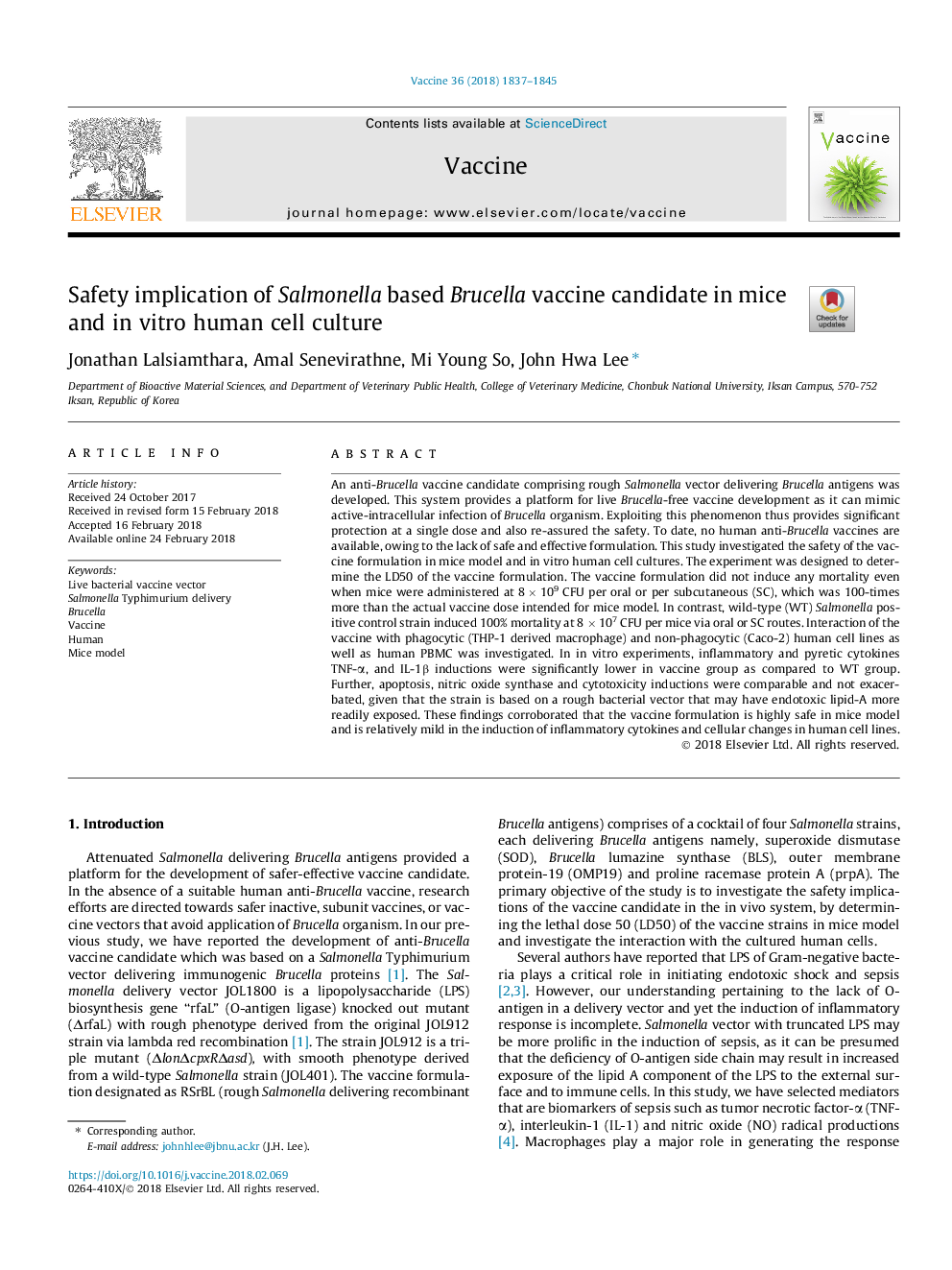| Article ID | Journal | Published Year | Pages | File Type |
|---|---|---|---|---|
| 8485856 | Vaccine | 2018 | 9 Pages |
Abstract
An anti-Brucella vaccine candidate comprising rough Salmonella vector delivering Brucella antigens was developed. This system provides a platform for live Brucella-free vaccine development as it can mimic active-intracellular infection of Brucella organism. Exploiting this phenomenon thus provides significant protection at a single dose and also re-assured the safety. To date, no human anti-Brucella vaccines are available, owing to the lack of safe and effective formulation. This study investigated the safety of the vaccine formulation in mice model and in vitro human cell cultures. The experiment was designed to determine the LD50 of the vaccine formulation. The vaccine formulation did not induce any mortality even when mice were administered at 8â¯Ãâ¯109 CFU per oral or per subcutaneous (SC), which was 100-times more than the actual vaccine dose intended for mice model. In contrast, wild-type (WT) Salmonella positive control strain induced 100% mortality at 8â¯Ãâ¯107 CFU per mice via oral or SC routes. Interaction of the vaccine with phagocytic (THP-1 derived macrophage) and non-phagocytic (Caco-2) human cell lines as well as human PBMC was investigated. In in vitro experiments, inflammatory and pyretic cytokines TNF-α, and IL-1β inductions were significantly lower in vaccine group as compared to WT group. Further, apoptosis, nitric oxide synthase and cytotoxicity inductions were comparable and not exacerbated, given that the strain is based on a rough bacterial vector that may have endotoxic lipid-A more readily exposed. These findings corroborated that the vaccine formulation is highly safe in mice model and is relatively mild in the induction of inflammatory cytokines and cellular changes in human cell lines.
Keywords
Related Topics
Life Sciences
Immunology and Microbiology
Immunology
Authors
Jonathan Lalsiamthara, Amal Senevirathne, Mi Young So, John Hwa Lee,
